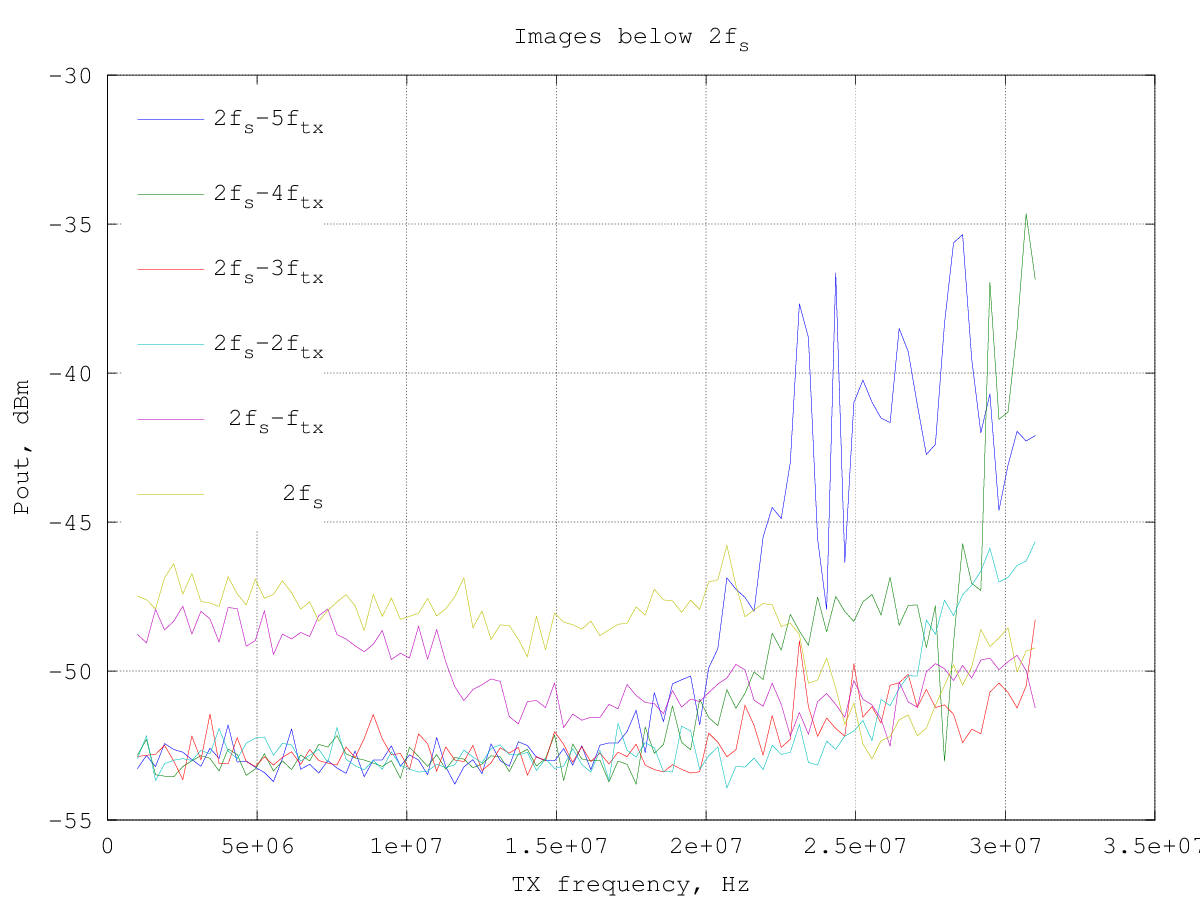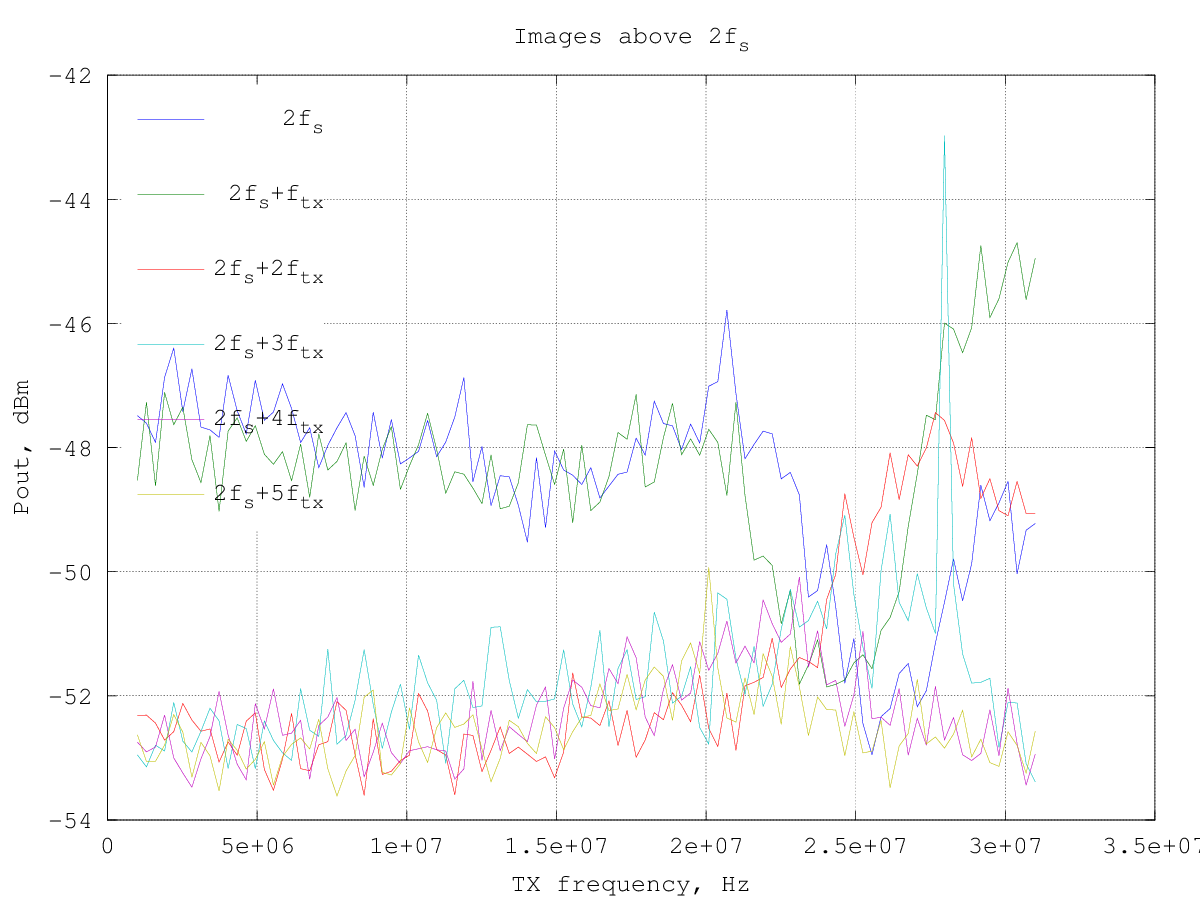IN3OTD's web site
...under perpetual construction.

Hermes-Lite SDR - RD15HVF1 push-pull power amplifier measurements
Measurements on a QRP power amplifier using a push-pull of RD15HVF1.
Measurements were done for the following conditions:
- at 12 V drain supply with frontend v1.42 as driver
The PA was also characterized stand-alone; for details see this page.
PA output with frontend v1.42 driver
The PA is a classic push-pull amplifier with resistive feedback, driven differentially by the driver board:
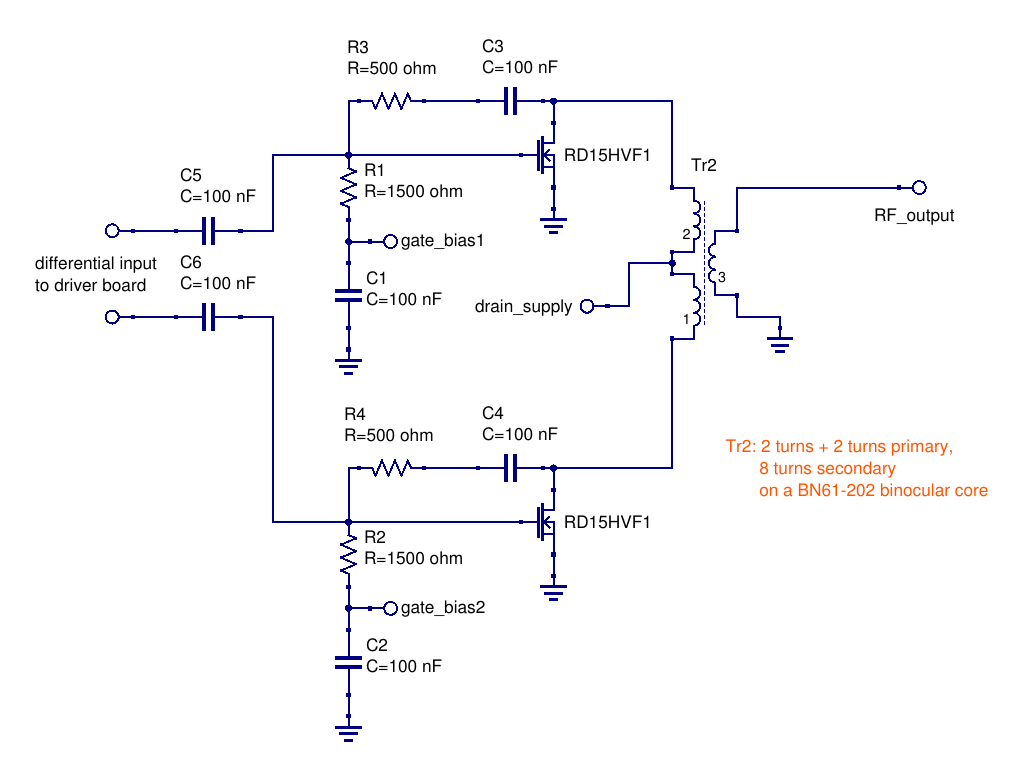
The following graphs show the PA performances for a power supply voltage of 12 V.
The PA was driven by the Hermes-Lite v1.42 driver board; the board was modified to use 12 Ω resistors at the output instead of the default 24 Ω resistors.
The output transformer was wound on a BN61-202 binocular core (2+2 turns on the MOS side, 8 turns on the 50 Ω side).
The firmware FPGA FW version used was the 20160220_txdac/CVA9/, half-duplex.
The system clock frequency fs was 73.728 MHz
Output vs. TX frequency and TxPGA gain
PA output power vs. frequency for several TxPGA gain values (TxDAC gain, see the AD9866 datasheet for details).
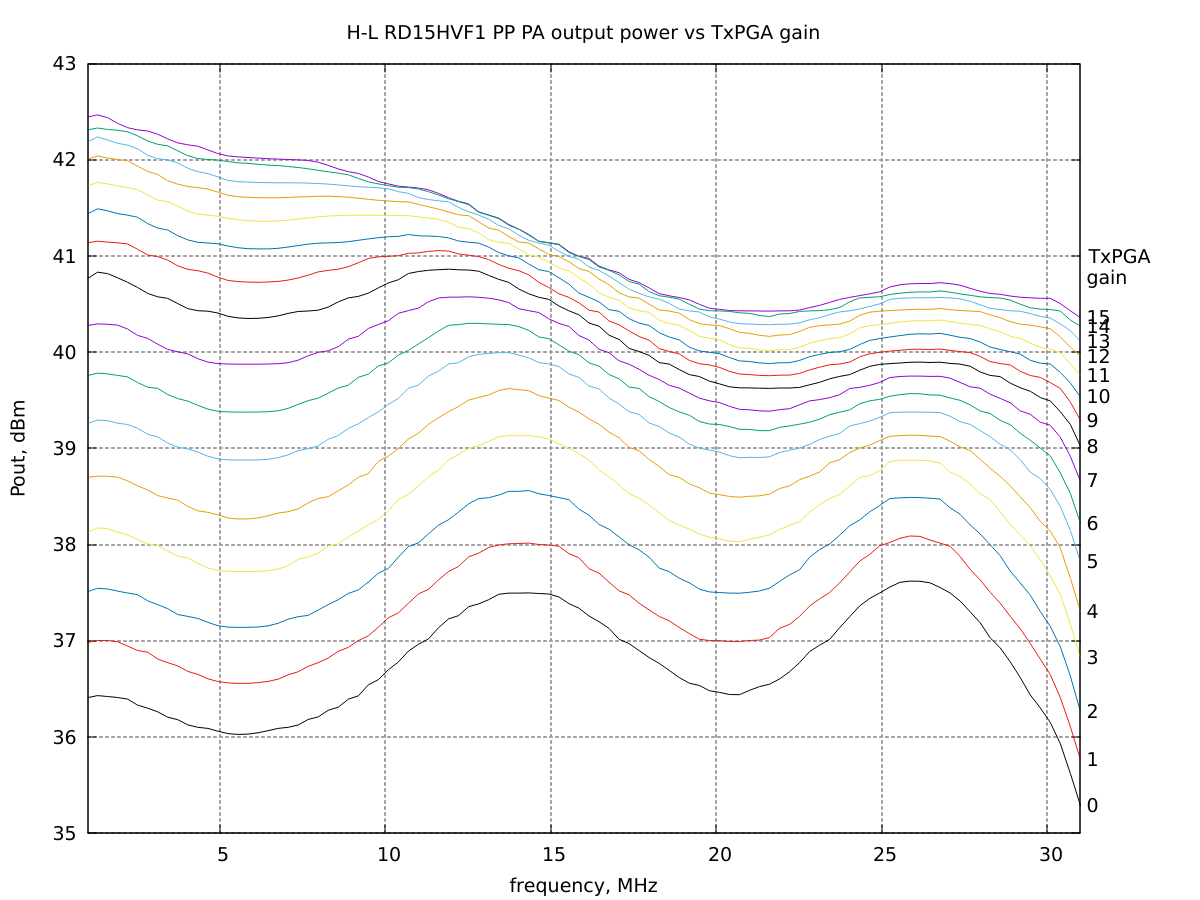
IMD vs. output power
Two-tone intermodulation distortion measured for three different center frequencies.
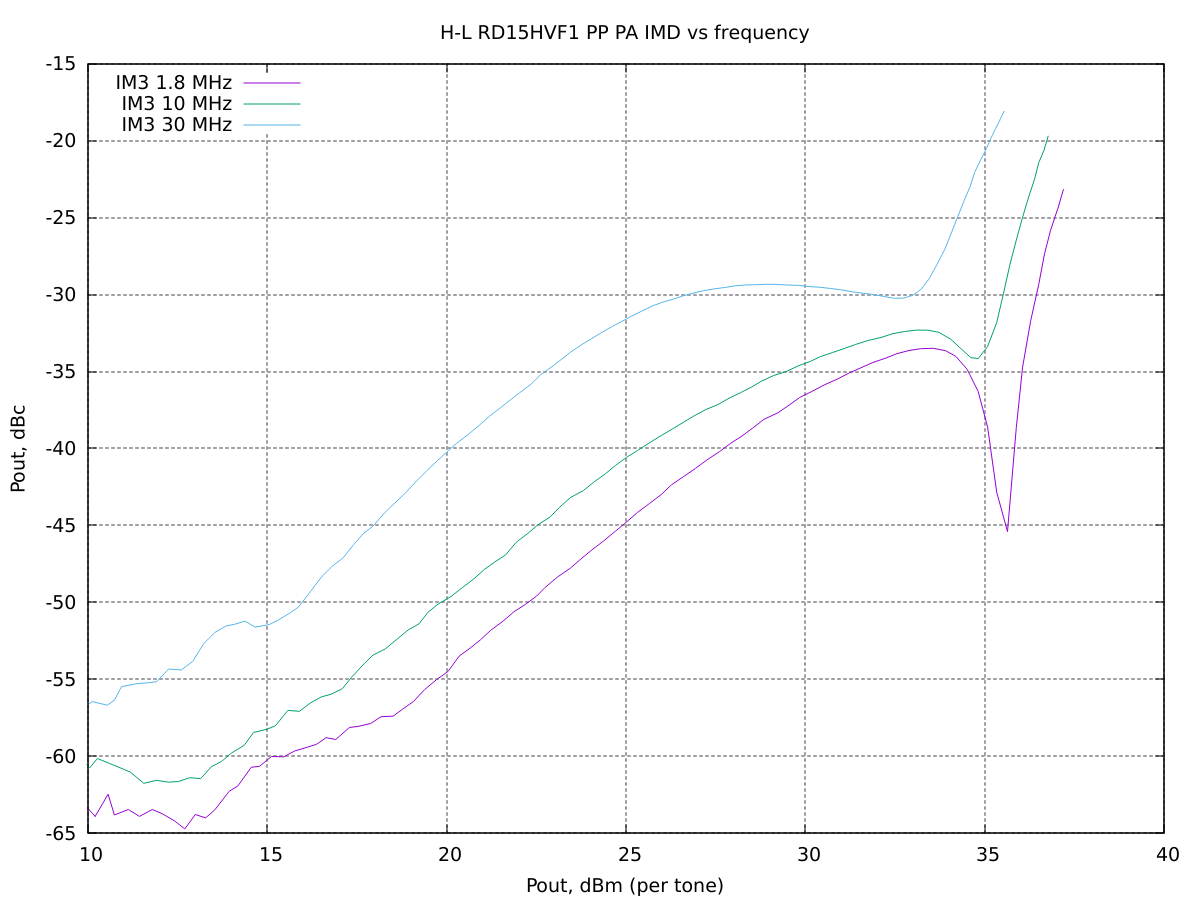
Output harmonics and spurs vs. frequency
TX output harmonics, DAC spurs and images vs. frequency for a TxPGA gain setting of 6, which gives an output power around 38.5 dBm (7 W), see graph above.
The harmonics are mainly generated by the PA, as the AD9866 TxDAC harmonics are filtered out by the frontend filter (above 30 MHz) and the harmonics level generated by the driver is low.
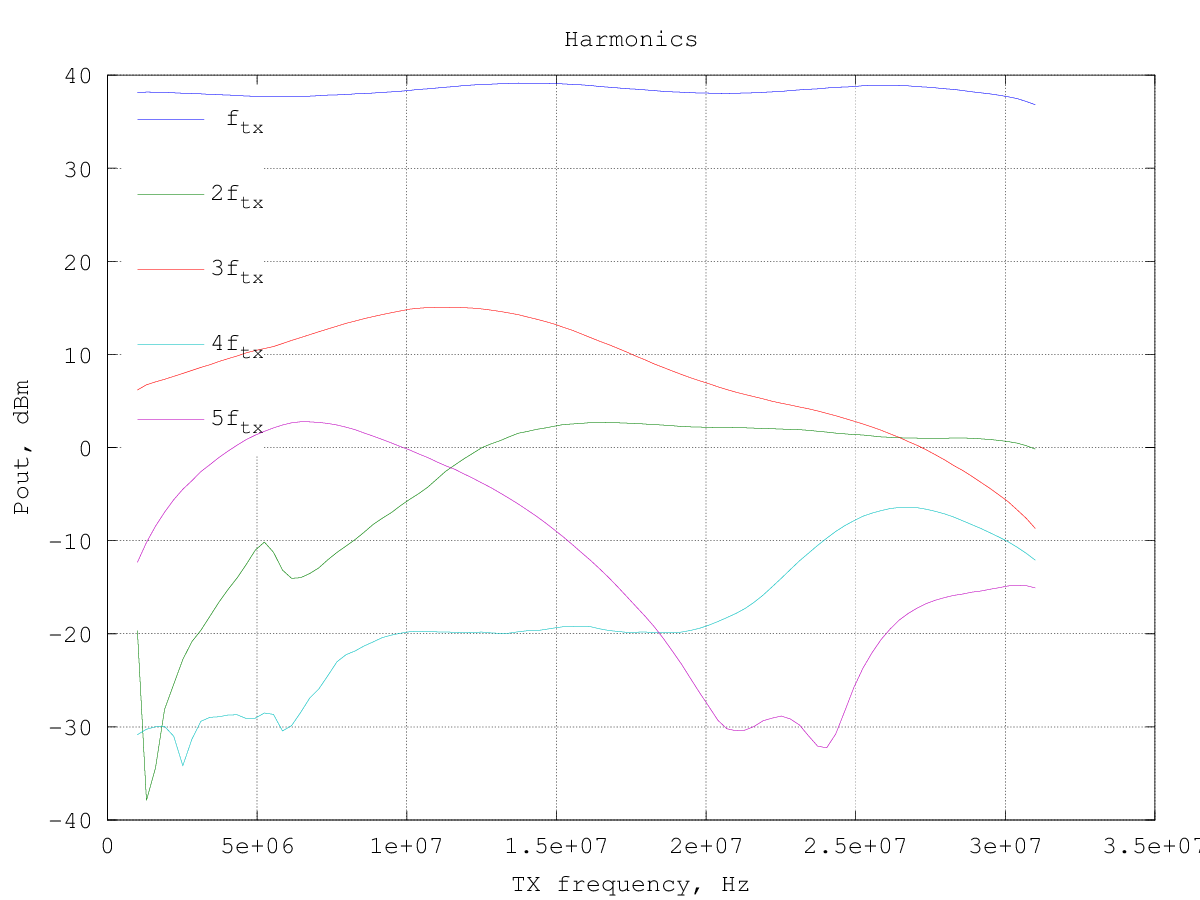
The sampling images and spurs are also mostly filtered out by the on-board filter, except of course when they fall in the filter passband. There is also some feedthrough in the filter stopband, probably due to a limited ultimate rejection.

